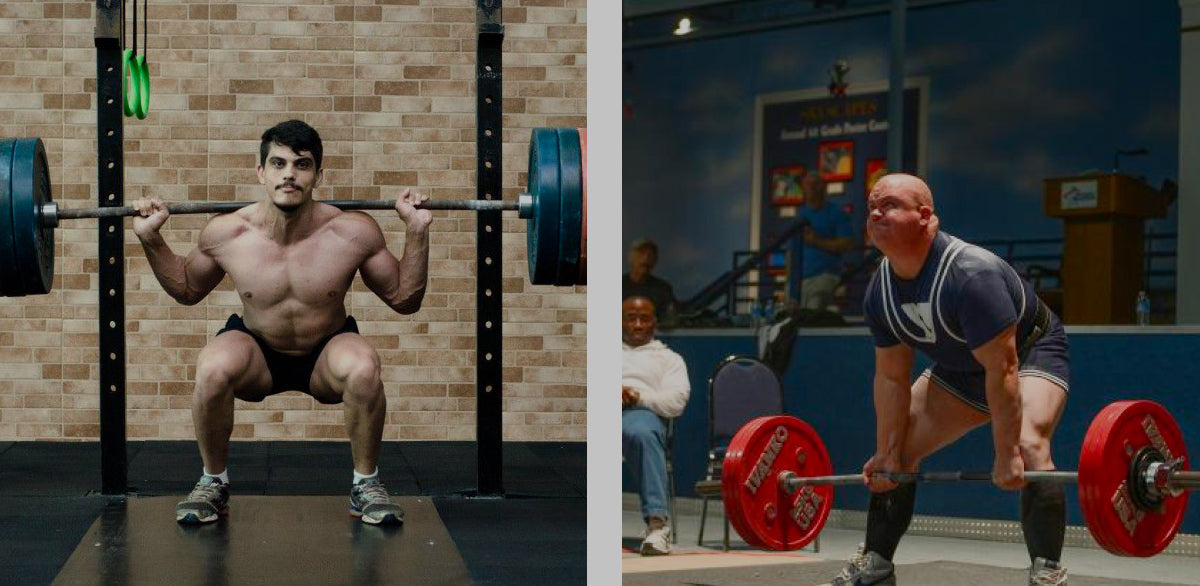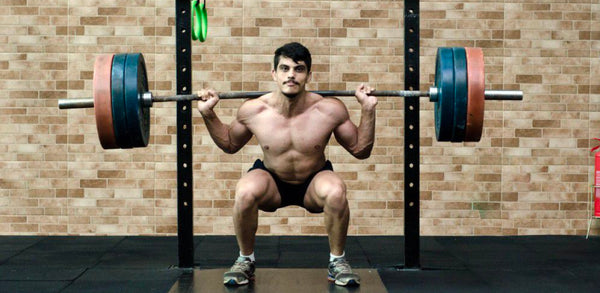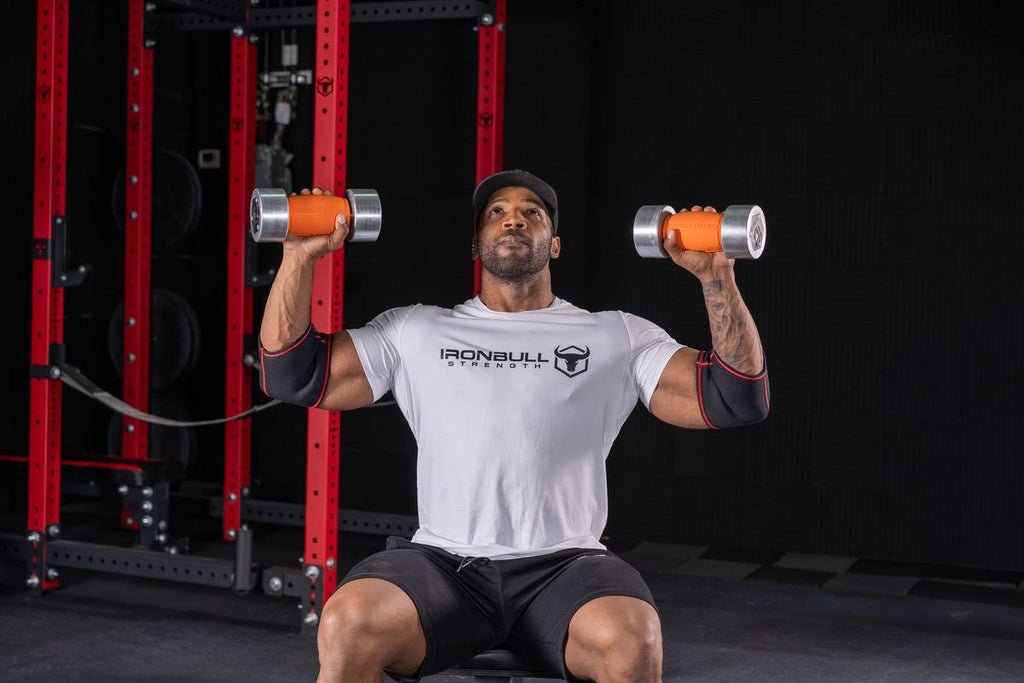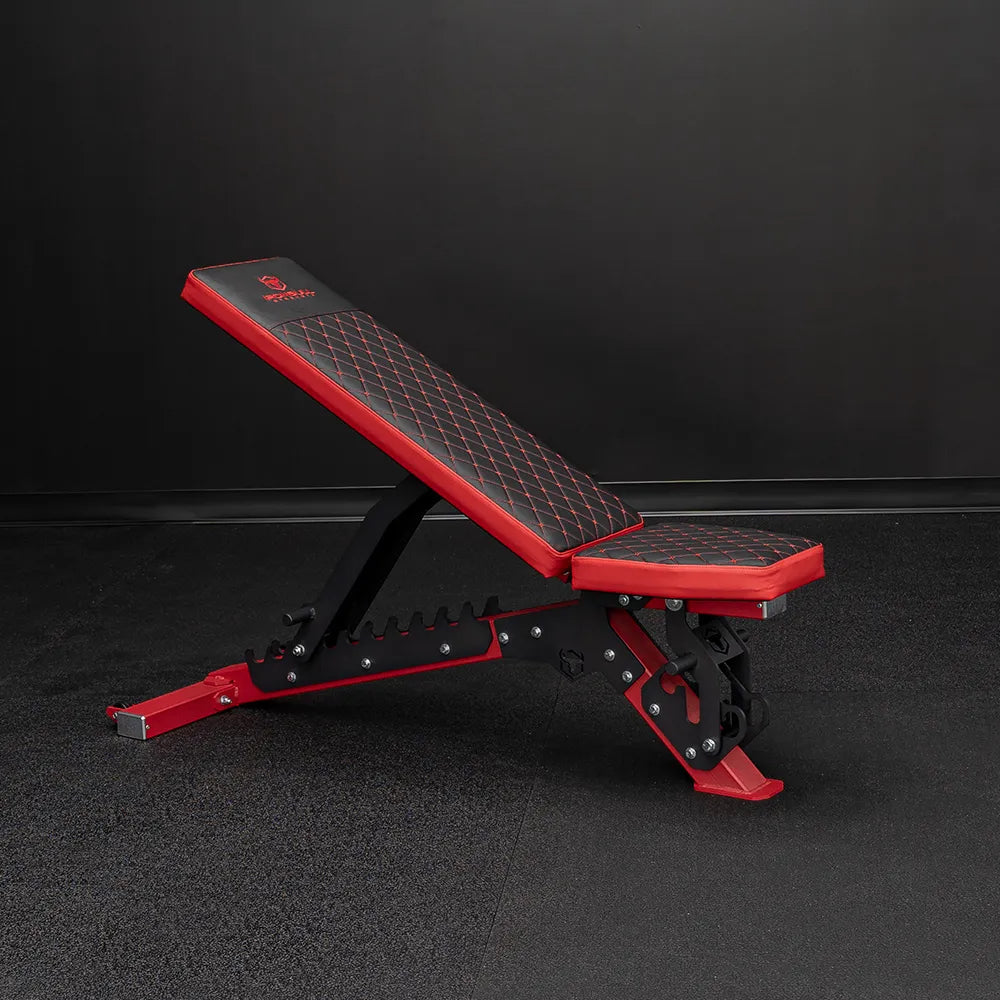Deadlift vs Squat - Which Lift is Better?

In strength training, two fundamental exercises that stand out the most are the squat and deadlift. These compound movements are commonly acknowledged as some of the toughest to perform in any program. They engage multiple muscle groups simultaneously and challenge the lifter to foster overall strength and muscle development.
Deadlifts vs. squats
But which lift is better – the squat or the deadlift? The answer depends on what goals you have for your performance. Although both of these movements share similarities, they also have their differences. In this article, we will compare and contrast the squat and the deadlift. We will discuss the muscles used for the squat and deadlift, their pros and cons, and when it's appropriate to program it. Knowing these differences can help you better understand the choice of performing a squat or a deadlift, advancing your abilities by selectively choosing either movement in the weight room.
To understand the similarities and differences of the squat and deadlift, it's important to start by breaking down the muscles used for both of these movements. Let’s dive into it and discuss which lift is better – the squat or the deadlift.
Muscles Used for the Squat and Deadlift
Picture of lower body anatomy
Below is a chart that describes the muscles used during the squat and deadlift. You will notice some similarities, and differences, and understand how to perform each movement in this guide below:
|
Exercise Name |
Muscles Used |
Guide for Performance |
|
Squat |
Primary Muscle Groups:
Secondary Muscle Groups:
|
|
|
Deadlift |
Primary Muscle Groups:
Secondary Muscle Groups:
|
|
When looking at this table, it is clear that the similarities between the squat and the deadlift are that both movements are compound, full-body movements that require some form of leg drive. The muscles used between the squat and deadlift are the gluteus maximus, quadriceps, hamstrings, and erector spinae. However, when looking at the deadlift, there are more muscles recruited that pertain to the posterior chain of the body. These muscles are the latissimus dorsi, trapezius muscles, and rear deltoids. The reason for these massive levels of muscular recruitment is the fact the deadlift is a pulling movement, which recruits the legs and the posterior chain. The squat recruits mostly the leg muscles, as the weight is placed on the upper back and the hips focus on ascending and descending each rep.
In addition to the anatomy of the squat and the deadlift, the differences between these movements are that these exercises displace weight differently, the range of motion is different, and the squat requires two phases of movement, while the deadlift only requires one.
Below, we will continue to investigate these similarities and differences to better understand which exercise is best to perform in your programming.
Squat and Deadlift Similarities
Picture of someone squatting
The similarities between the squat and the deadlift are:
- Compound Movements
- Full-body engagement
- Leg Drive
Compound Movements
The squat and deadlift are both fundamental compound movements that engage multiple muscle groups and joints simultaneously, making them integral components of strength training routines. In both exercises, a variety of muscle groups, including the quadriceps, hamstrings, glutes, and core, are actively involved, promoting overall strength and functional fitness. Additionally, both movements require a strong focus on maintaining proper form and alignment to ensure the safety and effectiveness of these exercises. These compound lifts not only contribute to muscle development but also enhance overall stability, coordination, and functional strength, making them essential staples in any well-rounded strength training program.
Full-Body Engagement
Both the squat and deadlift are compound exercises that engage multiple muscle groups throughout the body. These movements require the activation of various muscle groups, making them highly efficient for overall strength development. In the squat, muscles such as the quadriceps, hamstrings, glutes, and core are heavily involved. Similarly, the deadlift recruits those same muscles in addition to the posterior chain such as the traps, lats, and lower back.
Leg Drive
Leg drive is a crucial aspect of both the squat and deadlift. In the squat, leg drive helps lift the barbell upward, while in the deadlift, it aids in breaking the barbell off the ground. The engagement of the leg muscles in both exercises underscores their significance in lower body strength development. There are some differences between how much lower body strength is built between the squat and deadlift. However, it's fair to say that having strong glutes, hamstrings and quads is necessary for being good at the squat and the deadlift.
Squat and Deadlift Differences
Picture of someone deadlifting
The differences between the squat and deadlift are:
- Weight Displacement
- Range of Motion
- Phases of Movement
Weight Displacement
The deadlift and squat differ in how the weight is displaced. In the squat, the barbell is typically positioned on the upper back, across the shoulders. This placement requires the lifter to maintain an upright torso and engage the core for stability. With the deadlift, the weight is in front of the lifter, demanding a more forward-leaning posture and greater activation of the lower back. This displacement of weight is what causes the body to recruit different muscle groups more or less depending on the exercise. The squat recruits the quadriceps a ton, while the deadlift recruits the glutes and hamstrings more.
Range of Motion
One key difference between the two exercises is their range of motion. The squat involves a more extended range of motion as the lifter must drop their hips into a depth lower than 90 degrees. This also means that when the lifter drops their hips into the bottom of the squat, they have to bring their hips upwards which is twice the amount of movement that occurs in comparison to the deadlift.
The deadlift is a single-phase movement, simplifying its execution. When deadlifting, the hips are above parallel and put the lifter typically at an advantage. The range of motion for the squat and deadlift affects the degree of muscle activation and the demands placed on the body during each exercise.
Phases of Movement
The squat and deadlift, while both compound movements targeting various muscle groups, differ in their execution phases. The squat is a two-phased movement, involving both the descending and ascending phases. During the descent, the lifter flexes at the hip and knee joint to lower their body, engaging muscles like the quadriceps and hamstrings to stretch and shorten respectively. The ascending phase requires extending the hips and knee joints to return to the starting position, engaging the same muscle groups but requiring them to go from stretching to shortening to perform the desire of the squat. The squat being a two-phase movement makes the muscle stretch and shorten, an elastic characteristic of movement that allows the squat to be executed by building tension in the body.
On the other hand, the deadlift is a single-phase movement, lifting the barbell from the ground to a standing position. This lift primarily emphasizes hip hinge movement, engaging the posterior chain, including the hamstrings, glutes, and lower back. This movement also requires the lifter to go from no muscular contraction to full muscular contraction, especially in the legs, hips, and back. This type of sensation can be overwhelming, possibly depleting the amount of energy a lifter could generate for movement.
While both exercises contribute to full-body strength, the distinct phases in the squat and the single-phase nature of the deadlift highlight their unique biomechanical characteristics.
The Pros and Cons of the Deadlift

When it comes to the deadlift, the pros and cons are:
Pros:
- Postural Strength: Deadlifting promotes the development of strong and stable posture by engaging muscles throughout the entire posterior chain, including the lower back, glutes, and upper back. This can contribute to improved overall spinal alignment and reduced risk of postural issues.
- Grip Strength: Deadlifts are excellent for enhancing grip strength as they require a secure hold on the barbell throughout the lift. Improved grip strength can have positive implications for various daily activities and other strength training exercises.
- Functional Strength: Deadlifts are a highly functional exercise, mimicking real-world movements like picking up objects from the ground. The compound nature of the lift engages multiple muscle groups simultaneously, promoting overall functional strength applicable to daily activities.
Cons:
- Low Back Pain: Incorrect form or lifting too heavy can lead to low back pain during deadlifts. It is crucial to maintain a neutral spine throughout the lift to minimize the risk of lower back strain or injury.
- Highly Fatiguing: Deadlifting is a demanding exercise that places a significant load on the central nervous system and various muscle groups. As a result, it can be highly fatiguing, requiring proper recovery and careful integration into a balanced training program to prevent overtraining.
The Pros and Cons of the Squat

When it comes to the squat, the pros and cons are:
Pros:
- Functional Strength: Squats are a compound movement that promotes functional strength by engaging multiple muscle groups simultaneously. This translates to improved performance in daily activities and enhances overall functional fitness you can experience in daily activities.
- Leg Power: Squats target the muscles of the lower body, including the quadriceps, hamstrings, and glutes, promoting the development of leg power. This power is crucial for activities such as running, jumping, and other explosive movements you might see in a normal regimen or perhaps traditional sports like basketball and tennis.
- Hypertrophic Response: Squats are effective for inducing muscle growth due to the substantial stress they place on large muscle groups. This hypertrophic response is beneficial for those aiming to increase muscle size and overall muscular development. This is mostly due to the fact that the squat is a two-phased movement that provides for mechanical damage for a hypertrophic response.
Cons:
- Coordination: Squats require proper coordination to execute with correct form. Lack of coordination may lead to imbalance or improper movement patterns, emphasizing the importance of learning and practicing proper squat techniques.
- Shoulder Limitations: Some individuals with shoulder limitations or injuries may find traditional back squats uncomfortable or challenging. In such cases, modifications like front squats or goblet squats may be more suitable to accommodate shoulder concerns while still reaping the benefits of squatting exercises.
Which Lift is Better?
The eternal debate of whether the deadlift or squat is superior ultimately depends on individual goals and preferences. Both exercises have been compared to being similar, compound full-body exercises that require some kind of leg drive. However, to know truly which lift is best for you depends on what you want to get out of your training.
As a strength and conditioning expert, I am here to tell you that instead of asking “Which lift is better”, you should use both movements instead and experience the benefits both have to offer!
If that answer doesn’t work well for you, you should consider your goals and performance outcomes as a way to understand which lift works best for you. If you want to build your legs, improve your athleticism, and become a powerful athlete, the squat is the best exercise for you. As mentioned before, squats provide a hypertrophic stimulus to build leg muscle size that could aid your power and athleticism.
However, for those who want to increase postural strength, grip, and functional ability, the deadlift is the exercise for them. The idea of pulling weight provides the right stimulus for building the posterior chain that provides immense benefits to your performance.
Final Thoughts
In the ongoing debate of deadlifts vs squats, the answer to which lift is better remains unchanged. Both exercises offer unique advantages and can be integral components of a well-rounded strength training program. To pick one, though, is too tough unless you have a performance goal in mind.
To maximize benefits and minimize risks, it is advisable to incorporate a balanced approach, including both deadlifts and squats while paying careful attention to proper form, individual biomechanics, and specific fitness goals. Ultimately, the journey to strength and muscle development is as diverse as the individuals undertaking it, and the best way to lift may vary from person to person.


